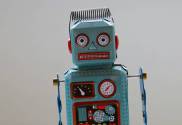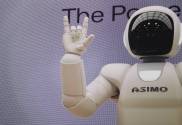
4 Big Ways AI Will Disrupt Software Testing
AI in software testing is growing more common, and for good reason. While today’s artificial intelligence is primarily used for automation and convenience, the technology grows smarter and more efficient every day. In software testing, AI can be used to augment many repetitive tasks. This both speeds up the involved processes and improves accuracy.
Regression testing is one example. Any time software code changes, regression tests are performed to ensure the applications are still functioning as intended. This is often done manually. However, AI can automate this entire process by checking at various intervals for issues with an application after code changes.
AI won’t be taking over completely, but it will certainly disrupt traditional software testing. Here’s how.
1. Regression Testing Automation
Normally, manual regression testing requires a lot of time and effort from the testers and developers. Every time software code changes, tests must be carried out on the resulting application. It warrants a back and forth between the developers and testers – or, if there are no testers, it calls for developers to wear many hats.
AI solutions can completely automate this process, carrying out the tests almost immediately after any code is altered. Provided it’s trained correctly, the AI is always going to be faster, more efficient, and more accurate than manual testers.
Moreover, developers will get the testing results and related data sooner, allowing them to begin working on necessary fixes instantly. Or, if no issues are detected, they can move on to other areas of development faster.
Adding another layer to this, AI can make regression testing better over time as it grows smarter. The regression testing cycle becomes much more reliable as a result.
2. Early Fault and Bug Detection
A major element of software testing is making sure the code or the applications themselves are up to par and perform at expected levels. So, a large part of testing is seeking out bugs and other software issues and fixing them.
Even the most skilled developers can miss syntax or coding errors, especially in large-scale projects. But while modern programming tools can pinpoint basic mistakes, natural language issues are often ignored until they’re discovered at runtime. AI in software testing can be used to detect these errors by finding faults and bugs.
Machine learning (ML) relies on natural language processing (NLP), training data, and preprogrammed scanning tools to locate potential issues and flag them for review. Better yet, the AI can be used to directly inject new code if and when the fixes are more obvious. It saves time, money, and a lot of headaches.
3. Productivity Boons
With early fault and bug detection and more supportive regression testing, developers and testers can expect some serious productivity boons across the board. With the help of AI and machine learning systems, many of the rote tasks associated with development can be sped up, augmented, or taken on directly by automation solutions.
This is not unlike what we see in other industries, where AI is increasingly used to power robotic process automation (RPA), intelligent automation (IA), and more.
For instance, communication between teams and departments. It is usually administered in the wake of application tests. Now it can be handled by automated solutions. Rather than manually sending the information, taking however long the related contacts would, the information can be shared immediately with all parties. That same benefit is extended to just about all processes and solutions that AI touches.
4. Self-Healing Code
AI and ML enable what’s called “self-healing technology” or self-healing code. Not only can AI identify and detect language issues faster than humans, but when empowered by the appropriate resources, it can also fix that code faster than ever. Early bug and fault detection is just the start.
AI solutions can actually inject code fixes for common issues, or they can be directed to fix more complex problems when they know what to look for and how to react. Better yet, as we generally see with ML, the self-healing algorithms become more accurate and more representative of working code, over time, merely through the ingestion of more information.
This means that when developers change code and it breaks the software, the AI would immediately take over and fix the problem. It reduces the amount of time developers and testers have to spend looking for those problems, but also it significantly cuts down on general troubleshooting. It can also flag common issues for review later to ensure repeated mistakes are not being made and issues don’t compound throughout the development phase.
AI in Software Testing: Good Disruption Is Coming
Thanks to productivity enhancements from smarter and more efficient processes, AI in software testing has the potential to disrupt the field. Manual tasks that require lots of time and effort can be spearheaded almost entirely by automation through AI. Also, early bug detection can be handled by NLP tools, while self-healing code ensures software applications always work at runtime. All of this reduces time spent on troubleshooting and manual bug detection. These benefits will positively disrupt software testing, and we couldn’t be happier about it.





